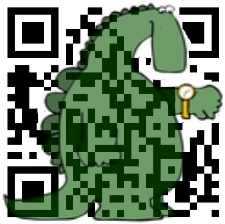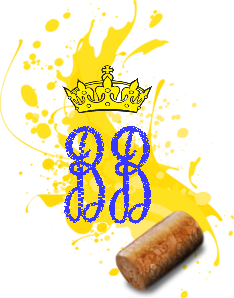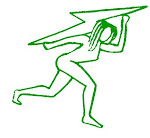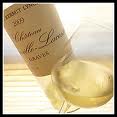Origins and Early Years
Gösta Adrian-Nilsson was born on April 2, 1884 in the university town of Lund in southern Sweden. Formerly small-scale farmers, his parents, Nils and Anna Nilsson, managed a farmers' market in a working class neighborhood.
Later in his life, GAN maintained that one of the primary memories of his childhood concerned his older brother's geography book, which featured numerous illustrations of nude, tattooed men of the Marquesas Islands. He claimed that these images helped to make him aware at an early age of his dual interests in the male body and in geometric-based art.
GAN provided many indications of his artistic talent during the course of his elementary and secondary school education. Before 1900, he had begun to produce manuscript collections of poems, illustrated with his own folkloric images. Although unpublished, many of these are preserved at the Lund University Library.
Drawing was the only subject in which he received high marks in his graduation exams in 1903 at Lund's Katedralskolan (Cathedral School), one of the most prestigious secondary schools in Scandinavia.
GAN completed a pharmacy apprenticeship in Malmö in 1904. However, he resolved to prepare for a career in art and, therefore, undertook a program of studies at the highly regarded Teknisk Selskabs (Technical School) in Copenhagen, where he studied in 1904 and 1905. In 1905, he moved to Stockholm where he found employment as a designer for Nordiska Möblerings (Nordic Furniture). Once he had fulfilled his mandatory military service in 1906, he focused on literary and artistic endeavors.
He made his public debut as both writer and artist in 1907, when he published a collection of poems and had an exhibition of paintings and drawings at Lund University Museum. Both these early events were presented under the acronym GAN, which he utilized for the rest of his life.
In his literary and visual works of the years 1907 through 1912, GAN boldly expressed his homoerotic desires. Thus, for example, in an Indian ink drawing (dated approximately 1908), a pair of beautiful nude youths are shown holding hands in the midst of branches with heart-shaped leaves.
GAN executed this and other early works in an Art Nouveau style, associated with the Decadent Movement of the late nineteenth and early twentieth centuries. By the early twentieth century, Art Nouveau had become stigmatized in Sweden because it was linked in the popular imagination with Oscar Wilde. However, this connection made Art Nouveau very appealing to GAN, who venerated Wilde as a heroic martyr for homosexual freedom.
GAN filled his home in Lund with photographs and paintings of Wilde. In 1908, he created a large portrait drawing of Wilde--incorporating appropriately aged versions of his own facial features but retaining the Irish writer's fuller figure and distinctive pose. Even in the later 1910s, when he had abandoned Symbolism for progressive avant-garde styles, GAN proclaimed in his diaries his profound identification with Wilde as the embodiment of his own erotic.
GAN's early homoerotic poems, paintings, and drawings attracted the attention of progressive intellectuals associated with Lund University. These included Bengt Lidforss, a radical biologist, who created scandal at the University through his openly homosexual lifestyle. According to Rydström, Lidforss introduced many of his younger associates to homosexual brothels in Copenhagen and Berlin.
Lidforss accompanied GAN to Copenhagen, where he studied at Kristian Zahrtmann's independent progressive art academy in 1910 and 1911. As Söderstrom has suggested, GAN might have had a sexual relationship with Lidforss during this time. However, this is uncertain because GAN already shared Lidforss's predilection for younger working class men and because he made no mention of such a relationship in his diaries.
In 1908, at the age of twenty-four, GAN fell deeply in love with Karl Edvard Holmström, a sixteen-year-old metal worker, whom he met while cruising in a park in Lund. Their casual encounter turned into one of the most deeply felt relationships of GAN's life.
GAN's diaries establish not only the circumstances of his meeting with Holmström but also the cultural and political significance that he attached to this and his other relationships with working class men. GAN compared his attraction to younger workers with the involvement of Oscar Wilde and Lord Alfred Douglas with "rough trade." Moreover, GAN related his sexual tastes to his deeply held socialist convictions. In this spirit, GAN gave Holmström the nickname Ilja, after a character in one of Maxim Gorky's novels.
Transformation of GAN's Art in Berlin: Interactions with Der Sturm
GAN's studies in Copenhagen in 1910 and 1911 familiarized him with Post-Impressionist art. As a result, he gradually abandoned the Symbolist style of his earliest work, and he created paintings of landscapes and other subjects in a Cézannesque manner by 1912. While artistically more progressive than his earliest images, these were still relatively conservative within the context of European art of the era. However, GAN's art underwent radical transformation through his contact with Expressionist and Futurist art in Berlin, where he arrived in January 1913.
With the help of Lidforss and other friends from Lund, GAN established contact with avant-garde artists and writers in the culturally dynamic German capital. By March 1913, he had become acquainted with Nell Walden, a progressive Swedish painter and intellectual, and her German husband, Herwarth Walden. The leading publicist of the pioneering German Expressionist group known as Der Sturm ("The Storm"), Herwarth Walden also managed the Der Sturm Gallery, the most important showcase for modernist art in Berlin.
GAN credited Herwarth Walden with putting him in contact with art that expressed the pulse of life itself. Through the numerous shows that Walden organized at Der Sturm Gallery and also through the Erster Deutscher Herbstsalon (First German Autumn Salon) of 1913, GAN became familiar with a comprehensive range of European avant-garde art, including dynamic images of modern technology by Severini, Boccioni, and other Italian Futurists; proto-abstract works by Kandinsky and others affiliated with Blaue Reiter ("Blue Reiter"), which offered a lyrical alternative to the harsh version of Expressionism promoted by Der Sturm; and early manifestations of the French Cubist movement by Robert and Sonia Delaunay and Picasso.
Encouraged and recommended by both Waldens, GAN was welcomed into Der Sturm. Thus, he was selected to be the Artistic Manager for Glashaus (Glass Pavilion), designed by Bruno Taut for the Deutscher Werkbund (German Federation of Artists and Architects) exhibition in Cologne in 1914. GAN maintained that the kaleidoscope of colors that rotated within the Glashaus profoundly influenced the development of his style.
GAN continued to participate in various exhibitions and publications sponsored by Der Sturm even after his return to Sweden. Despite the outbreak of World War One, he participated in the Swedische Expressionisten (Swedish Expressionists) show that Walden organized at Der Sturm Gallery, Berlin in April and May of 1915. In this exhibition, GAN's innovative synthesis of Expressionism, Futurism, and Cubism distinguished his paintings from the imitations of Matisse's style offered by the other three participants.
In December 1917, GAN felt honored by the inclusion of eleven of his paintings in an exhibition at Der Sturm Gallery, alongside works by Paul Klee and Gabriele Münter.
GAN produced numerous articles for Der Sturm magazine, which also illustrated various works by him. For the catalogue of a major exhibition of Kandinsky's works at Gummeson's Gallery in Stockholm in 1915 and 1916, GAN wrote a lengthy essay, explaining how Kandinsky's abstract style embodied profound spiritual feeling. In response, Kandinsky wrote GAN a profuse letter of thanks, in which he also commended the boldness of the Swedish artist's work.
Herwarth Walden's belief that Expressionism, Futurism, and Cubism could be understood as variations of an inclusive Expressionist movement paved the way for GAN's distinctive combination of these styles in his art. Produced in Berlin, The Electrician (1913) is often described as GAN's first truly modernist painting. In this work, GAN brought together the bold, angular shapes of Der Sturm; the intense, shimmering colors of Blaue Reiter; the dynamic organization of pictorial motifs in Futurism; and the geometric rigor of pioneering French Cubism. While GAN's heroization of the worker can be understood in part as a manifestation of his socialist convictions, this theme also served as a public declaration of his personal eroticism.
GAN in Sweden: 1914-1920
Holmström had accompanied GAN to Berlin in January 1913, and the two lived blissfully together until Holmström was recalled near the end of the year to work in an armaments factory. Emotionally devastated by Holmström's unexpected death from pneumonia in August, 1914, GAN returned from Germany to Lund. GAN remained in Lund until 1916, when he moved to cosmopolitan Stockholm. Although GAN's time in Berlin was cut short by news of Holmström's tragic early death, he continued to draw great creative inspiration from his experiences in the German capital.
From the point of view of queer cultural history, the years between 1914 and 1920 constitute the most exciting period in GAN's career. During these years, GAN zealously devoted himself to the creation of paintings and drawings of workers, athletes, soldiers, and sailors. These works are at once erotically charged, aesthetically innovative, and socially significant.
An outstanding example of his mature style, Maskinarbetaren (Machine Engineer, 1918) eloquently reveals the homoeroticism that underlay GAN's utopian vision of the modern industrial world. The bright, shimmering colors and the kaleidoscopic arrangement of intersecting pictorial planes contribute to the exuberant mood of the painting. The right side and much of the center of the painting is dominated by the fragmented--but still clearly muscular and stunningly beautiful--physique of this shirtless worker. His unbuckled pants extend out toward the viewer, and three versions of his erect penis are displayed near his right hip.
Parts of factory buildings, locomotives, and various machines surround the dominant figure. While the title and the various machine components indicate that the subject of Maskinarbetaren is an industrial worker, the prominent tattoo of an anchor on his chest also identify him as a sailor: one of GAN's most common pictorial themes during the later 1910s, and the preferred object of erotic desire throughout his life.
The three versions of Katarinahissen (Katarina Elevator), produced in 1915 and early 1916, are among GAN's most famous paintings of sailors in his emphatically modernist fusion of Expressionism, Futurism, and Cubism. Built in 1883, the Katarina Elevator links the upper city with the port of Stockholm, and it was widely regarded in the early twentieth century as a powerful symbol of industrial progress. To underline this significance, GAN incorporated other examples of advanced technology into this series--for instance, brightly lit zeppelins in night sky of Katarinahissen II.
Promenading in the foreground of each of the Katarinahissen paintings are several handsome, muscular sailors. Their varied, twisted poses and the faceted forms of their angular bodies complement the theme of the dynamism of the modern city. However, these figures also evoke GAN's own erotic desires. The enlarged, strongly outlined eyes and vivid red lips of the sailors enhance their sexual allure. Glancing in many different directions, these sailors allude to the appropriation of the lower port area as a site of cruising by homosexual men. Strategically placed throughout the paintings, phallic shapes hint at the possibility of sexual activity.
After settling in Stockholm in 1916, GAN frequently cruised the port area as well as the city's parks and public urinals, on the look out for soldiers and sailors who were willing and, at least in some cases, eager to provide sexual favors in exchange for badly needed cash, to supplement their very modest stipends. As Dodo Parikas has explained, anonymous sexual encounters with sailors and horse guards were a fundamental part of the male homosexual subculture in Stockholm throughout the first half of the twentieth century. Despite occasionally draconian enforcement of sodomy laws, such activities generally were overlooked by police, especially in the 1910s and 1920s when public officials were reluctant to acknowledge homosexual presence in the city.
During the later 1910s, GAN created numerous works that explicitly deal with the homosexual sex work of sailors and soldiers. For instance, a pen and crayon drawing entitled Två Sjöjmän på Berns (Two Sailors at Berns) depicts muscular seamen, who clearly seem to be waiting for clients at the Berns Café, well known as a homosexual meeting place. Seated at a table in provocative poses, the two smoking men gaze intently in opposite directions. The widespread legs of the foreground sailor emphasizes his bulging crotch area. The inscription "Berns 18/10 16" suggests that GAN may have intended the drawing as a record of his observations at the café on a particular date.
GAN's diary entries indicate that he conceived Lördagsväll kl. 9 (även kallad Berns) [Saturday 9 o'clock (also called Berns1918)], an oil painting of 1918, as a vibrant homage to cruising in the Kungsträdgården and Berzelii parks and the adjoining streets. The inscriptions "BERNS" and "KUNGSTR" identify locales, while a large clock indicates the time. On the right side of the composition are two large profiles of a pair of smoking sailors. Scattered throughout the painting are smaller figures of other men--primarily uniformed sailors and soldiers, but also including a partially nude figure. Tilted up towards the viewer, the brightly colored, faceted shapes--representing streets, segments of garden areas, and diverse architectural features--create a lively, kaleidoscopic effect.
Although stylized, En sjömen i Stockholm (Sailors in Stockholm, 1919) records names and architectural details more clearly and constitutes, in effect, a comprehensive overview of the city as frequented by homosexual men. In his diary, GAN described the painting as representing his evening in Stockholm. In a series of paintings that he created of Swedish cities in 1920, GAN depicted himself with a handsome young worker in his hometown, Lund, and he envisioned both Göteburg and Stockholm as centers of homosexual prostitution.
In June 1917, while cruising the underground urinal beneath Norrmalstorg, a large public square in central Stockholm, GAN met Edvin Andersson, then a twenty-two-year-old torpedo operator in the Swedish navy, who recently had completed officer training at Skeppsholmen.
Handsome, muscular, friendly, and intelligent, Andersson perfectly embodied all of the qualities that GAN admired in a man. GAN's diaries eloquently reveal how profoundly he fell in love with Andersson, who reciprocated his affection. For the rest of GAN's life, Andersson offered him strong emotional support. Andersson even changed his last name to Ganborg to indicate his alliance with the artist. Despite their strong emotional attachment, GAN continued to obtain his primary sexual satisfaction through casual, and often paid, sexual encounters with sailors, soldiers, and industrial workers.
GAN depicted Andersson in several of the largest of his paintings of seamen. Executed in his distinctive fusion of Expressionism, Futurism, and Cubism, II eld 629 (II Fire 629) is a direct portrait of Andersson. Transcribed in large characters in the upper right of the painting, the title refers in abbreviated form to Andersson's official designation in the Swedish Royal Naval: "2:a eldarkompaniet nr 629" (2nd-class fire brigade commander number 629). Anchors, waves, and flames are among the references to Andersson's naval vocation.
Andersson's handsome profile dominates the upper left side of the painting, and his full red lips grip a lit cigarette--a potent erotic symbol for GAN, as his diaries make clear. A stylized, but still sensual, depiction of Andersson's torso extends from the upper left to the lower right of the painting. GAN emphasized his personal association with Andersson by including his own profile, labeled with his acronym, in the lower left of the painting. Cannons and towers--obviously phallic symbols in this context--intersect with Andersson's body.
Other depictions of Andersson in a naval setting incorporate even more abundant phallic imagery. For example, Kanonexercis på Flygia (Cannon Exercise in Flygia, 1917) shows large cannons and abstract phallic objects radiating from two intertwined central figures of Andersson.
These paintings of Andersson were among the thirty-three works that GAN included in the major retrospective, entitled Sjömanskompositioner (Sailor Compositions), held in January 1918 at Gummesson's, Stockholm's leading avant-garde art gallery. In his catalogue statement, GAN indicated that he intended his images as a tribute to a certain seaman.
Although GAN received some favorable reviews, most critics condemned the style of his paintings in the 1918 exhibition as chaotic. Most published reviews overlooked the sexual implications of the artworks, but the critic of the leading daily newspaper Dagens Nyheter bluntly condemned GAN's depiction of "Berzelii parks erotiska jaktmarker" (Berzelii park's erotic hunting grounds). It is indicative of GAN's commitment to homoerotic subject matter that he created the previously discussed Lördagsväll kl. 9 (även kallad Berns) [Saturday 9 o'clock (also called Berns1918)] after receiving this harsh public reprimand.
Because of the frequently hostile critical reception of his work, GAN had a difficult time supporting himself from his art. However, despite the condemnation of his art in the Swedish press, he was highly regarded in avant-garde artistic and intellectual circles. Thus, he was a frequent contributor to avant-garde journals, such as flammen, a progressive art journal, published from 1917 to 1921. In his influential articles in flammen, GAN addressed a wide variety of theoretical and practical issues--for instance, on defining and achieving beauty in art and on the importance of including references to modern industrial production in images.
In 1919, GAN became the first artist working in Sweden to create purely abstract paintings. The oil paintings Abstrakt I and Abstrakt II are executed in a Constructivist style, which attests to his continued engagement with evolving trends in European progressive art.
GAN in the 1920s
In 1920, GAN moved to Paris, then widely regarded as the leading center of European art production, and he remained there until 1925. In Paris, he evolved in new creative directions, but he continued to utilize art as a vehicle to express his love of the male body and to convey the dynamic energy of the modern era.
Influenced by Dadaist and Cubist experiments with collage, he began to work productively in that medium. Although distinct in style and medium, his collages frequently retain the kaleidoscopic effects of his Expressionist-Futurist-Cubist paintings. For example, the densely packed Dansande Sjömän (Dancing Sailors, 1923-1925) interweaves pictures of ships and industrial products with photos of sailors embracing, dancing, and posing for admirers. The stenciled words might seem to recall the commercial slogans routinely incorporated in Cubist collage. However, upon closer examination, it is apparent that many of the words are common Swedish, English and German male personal names. Adjacent to the large central figure of a sailor, "BERNS" indicates one of GAN's favorite locales for cruising in Stockholm.
In a poster that he created for the last solo exhibition of his work at Der Sturm Gallery in 1922, GAN included a prominent figure of a sailor in the midst of various other organic shapes and industrial objects, including several phallic shaped tools. The name Der Sturm and various other words and phrases are presented in varied directions throughout the composition. The words surrounding the sailor again affirm GAN's own eroticism: JÄRET (heart), HOPP (hope), KÄRLEK (love).
In Paris, GAN became acquainted with Ferdinand Léger, and he was strongly influenced by Léger's conception of a new form of geometric abstract art that would celebrate the industrial world. The impact of Léger is evident in GAN's series of four large paintings entitled Olympiad (1924). In these, GAN utilized brightly colored, simplified geometric shapes for the bodies of athletes. Nevertheless, protrusions in the groin areas of the figures and scattered phallic shapes endow the Olympiad paintings with a forceful homoeroticism, which distinguishes GAN's work from Léger's.
While in Paris, GAN became increasingly interested in abstraction as a vehicle for the expression of spirituality. Written in 1921 and published the following year, his treatise Den Gudomliga Geometrien (Divine Geometry) proclaimed that artists must discover the laws of geometry ruling the universe and utilize these as the basis of all their creative endeavors. His theories had a strong metaphysical basis, and he described art as a mystical endeavor. GAN's theories fostered the development of geometric abstraction in Scandinavian art.
In 1925, he returned to Lund, where he lived until 1931, when he moved back to Stockholm. Between 1925 and 1930, GAN worked in two distinct artistic idioms. On one hand, he worked in a deliberately naïve style of narrative painting, inspired by folk art. On the other hand, he systematically explored the implications of the principles that he laid out in his treatise of 1921 through his production of geometric paintings and sculptures. Although abstract, GAN explained in his diaries that these works could be understood as homoerotic due to the profound inspiration that he derived from his sexuality.
GAN also utilized his geometric style in the sets and costumes which he designed for Swedish Opera's 1928 production of the ballet Krelantems and Eldeling. The modernist composer Moses Pergament wrote his expressionistic musical score of this ballet to complement the effects of GAN's art.
Final Decades
During the 1930s, GAN again changed his artistic manner and developed a distinctive version of Surrealism, into which he incorporated some Cubist elements. GAN's exploration of Surrealism influenced younger Swedish artists, especially those associated with the artists colony at Halmstad. In the 1940s and 1950s, GAN frequently created works in an abstract geometric style, although he also produced landscapes in these decades.
During the final decades of his life, GAN continued to contribute articles to art publications and to exhibit his art, primarily in group shows. However, his work after 1930 generally received less critical attention than his earlier efforts had. Nevertheless, Edvin Andersson offered encouragement to GAN and worked hard to promote interest in his art.
GAN died on March 29, 1965 in the apartment in which he had lived since he moved back to Stockholm in 1931.
Conclusion
Interest in GAN's work has grown steadily since the 1980s. Marking the centenary of GAN's birth, a major retrospective of GAN's work was held in 1984 at Liljevachs Konsthall, Stockholm and at Konsthall, Malmö. Both the exhibition and the accompanying comprehensive catalogue stimulated renewed appreciation of GAN's important role in Swedish modernism.
In 1985, Jan Torsten Ahlstrand published a detailed monograph on the artist's life and work through 1920. An outstanding example of queer cultural history, Ahlstrand's book has formed the foundation for later scholarship on the artist. Ahlstrand carefully analyzed the aesthetic and theoretical bases of GAN's work. Moreover, he reconstructed the artist's personal life and established the link between his sexuality and his creativity.
In Scandinavia, GAN is now generally considered one of the most significant Swedish artists of the twentieth century because of his aesthetic innovations. During the course of his career, he created highly original work in a variety styles, including a powerful synthesis of Expressionism, Futurism, and Cubism; Dadaist inspired collage; and pure geometric abstraction, among others.
























































































































